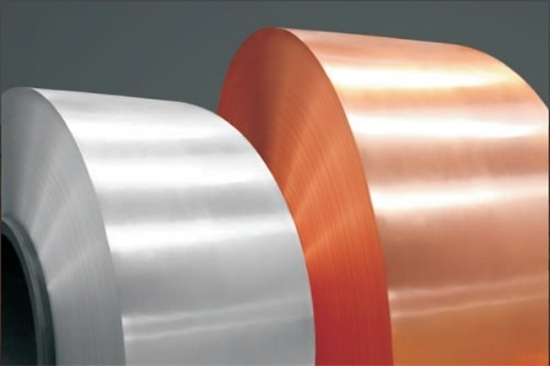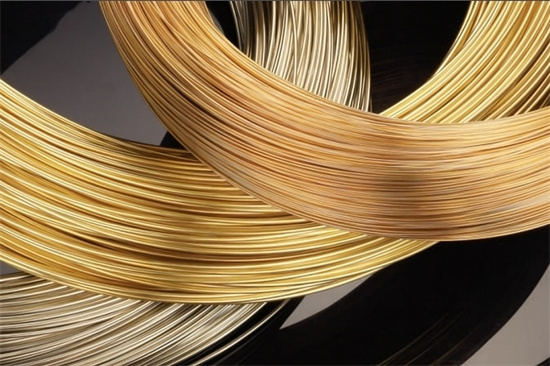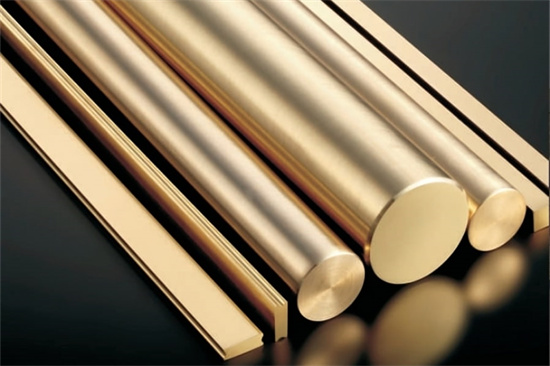


CuSn5: A Comprehensive Look at This Indispensable Alloy
Low MOQ
Provide low minimum order quantity to meet different needs.
OEM & ODM
Provide customized products and design services to meet unique customer needs.
Adequate Stock
Ensure fast order processing and provide reliable and efficient service.
Customer Satisfaction
Provide high quality products with customer satisfaction at the core.
share this article
Table of Contents
When it comes to materials that combine strength, durability, and corrosion resistance, CuSn5 stands out as a versatile and reliable choice. This phosphor bronze alloy, composed primarily of copper (Cu) and tin (Sn), is widely used in various industries due to its impressive mechanical properties and excellent resistance to wear. Whether you’re working in marine engineering, automotive manufacturing, or electrical components, CuSn5 provides the perfect blend of form and function.
But, why is CuSn5 the go-to alloy for so many applications? In this comprehensive guide, we’ll explore everything from its composition to its applications, specifications, and pricing. We’ll also compare CuSn5 with similar alloys and dive deep into its advantages and limitations. If you’re looking for a one-stop resource that covers all things CuSn5, you’re in the right place.
Let’s get started!
Overview
CuSn5 is a phosphor bronze alloy that contains approximately 5% tin. The addition of phosphorus to this copper-tin mixture enhances the alloy’s strength, hardness, and resistance to fatigue. It also improves machinability, making it an ideal material for components that experience repetitive stress, such as springs, bearings, and gears.
One of the standout features of CuSn5 is its corrosion resistance. Whether you’re dealing with saltwater in marine environments or harsh industrial conditions, CuSn5 can stand up to the elements. Its wear resistance and low friction coefficient also make it a popular choice for sliding parts and mechanical components.
Key Characteristics
- Good Strength and Hardness: Offers a balance between strength and workability.
- Excellent Corrosion Resistance: Performs particularly well in marine and industrial environments.
- Good Wear Resistance: Low friction coefficient makes it suitable for moving parts.
- Fatigue Resistance: Performs well under repetitive loads, ideal for springs and gears.
- Moderate Electrical Conductivity: Makes it useful for electrical components that also require mechanical strength.
Composition and Properties
Understanding the composition and mechanical properties of CuSn5 is key to determining where and how it can be used. Let’s break down its chemical composition and examine its mechanical and physical properties in detail.
Composition
The specific composition of CuSn5 offers a balance between strength, ductility, and resistance to corrosion. The addition of tin increases the alloy’s corrosion resistance, while the trace amounts of phosphorus improve its wear resistance and machinability.
| Element | Percentage (%) |
|---|---|
| Copper (Cu) | 94.5 – 95.5 |
| Tin (Sn) | 4.5 – 5.5 |
| Phosphorus (P) | 0.03 – 0.35 |
- Copper (Cu): Provides the base material, contributing ductility and thermal conductivity.
- Tin (Sn): Enhances corrosion resistance, strength, and wear resistance.
- Phosphorus (P): Improves machinability and fatigue resistance.
Mechanical and Physical Properties
Here’s a closer look at the properties that make CuSn5 such a versatile material:
| Property | Typical Value |
|---|---|
| Tensile Strength | 450 – 600 MPa |
| Yield Strength | 250 – 350 MPa |
| Elongation | 10 – 30% |
| Hardness | 90 – 140 HB |
| Density | 8.8 g/cm³ |
| Thermal Conductivity | 50 – 60 W/mK |
| Electrical Conductivity | 12 – 15% IACS |
| Fatigue Resistance | High |
| Corrosion Resistance | Excellent |
Why These Properties Matter
- Tensile Strength: Determines how much force CuSn5 can withstand before breaking. This makes it suitable for high-load components.
- Corrosion Resistance: Essential for applications in marine environments or chemical industries, where materials are exposed to corrosive elements.
- Wear Resistance: Low friction and high wear resistance make CuSn5 ideal for bearings and gears, where components are in constant motion.
Applications: Where and How It’s Used
Thanks to its unique combination of properties, CuSn5 is used in a wide range of industries and applications. Whether you’re working in marine environments, automotive manufacturing, or electrical engineering, this alloy offers the durability and performance required for demanding applications.
Common Applications
| Industry | Applications |
|---|---|
| Marine | Bearings, bushings, propeller shafts, fasteners |
| Electrical | Connectors, terminals, switch components |
| Automotive | Valve guides, gears, springs |
| Aerospace | Precision components, fasteners |
| Industrial Engineering | Gears, bearing cages, wear plates |
| Musical Instruments | Strings, wind instruments |
Why CuSn5 Fits These Applications
- Marine: CuSn5 excels in marine environments due to its corrosion resistance. It’s commonly used in propeller shafts, bearings, and bushings, where exposure to saltwater and mechanical stress is a concern.
- Electrical: With moderate electrical conductivity and high fatigue resistance, CuSn5 is ideal for connectors, terminals, and other electrical components that require both mechanical strength and conductivity.
- Automotive: In the automotive industry, CuSn5 is found in valve guides, gears, and springs due to its ability to handle high loads and repetitive stress.
- Aerospace: Aerospace components demand precision, strength, and reliability, which CuSn5 provides in abundance.
- Musical Instruments: The alloy’s acoustic properties make it a favorite for musical strings and wind instruments.
Specifications, Sizes, and Grades
Choosing the right specifications and grades of CuSn5 is crucial for ensuring optimal performance in your application. Below, we provide an overview of the various forms, sizes, and grades available for this alloy.
Specifications and Sizes
| Specification | Details |
|---|---|
| Form | Sheets, strips, rods, wires, bars |
| Thickness Range (Sheets) | 0.2 mm to 10 mm |
| Diameter Range (Rods) | 1 mm to 150 mm |
| Temper | Annealed, cold-worked, hard |
| Standards | ASTM B103, DIN 17662, EN 1652 |
Grades
| Grade | Key Characteristics |
|---|---|
| CuSn5-Soft (Annealed) | High ductility, suitable for deep drawing and forming |
| CuSn5-Hard (Cold-Worked) | Increased strength, used in wear-resistant applications |
| CuSn5-Extra Hard | Maximum strength, ideal for high-load, wear-intensive applications |
Why Specifications Matter
The form and grade you choose will significantly impact the performance and cost-efficiency of the alloy for your project. For instance, annealed CuSn5 offers high ductility, making it ideal for applications requiring deep drawing or forming, while the harder grades are better suited for high-wear environments.
Suppliers and Pricing
When sourcing CuSn5, it’s important to choose a reliable supplier and understand the factors that influence the pricing. Below, we’ve compiled a list of prominent suppliers and estimated pricing to give you a better sense of the market.
Suppliers and Pricing Details
| Supplier | Location | Price Range (per kg) | Delivery Time |
|---|---|---|---|
| PhosphorBronze Ltd. | USA | $12 – $22 | 2-3 weeks |
| EuroAlloys Ltd. | Europe | €10 – €18 | 1-2 weeks |
| AsiaMet Corp. | China | $10 – $20 | 3-4 weeks |
| GlobalMetals Ltd. | India | $9 – $16 | 2-4 weeks |
| MarineAlloys UK | UK | £11 – £20 | 1-2 weeks |
Factors Affecting CuSn5 Pricing
- Form: The final cost can vary depending on whether you’re purchasing sheets, rods, wires, or strips.
- Grade: Higher-strength grades, such as cold-worked or extra-hard CuSn5, usually cost more due to the additional processing involved.
- Quantity: Bulk purchases often result in lower unit pricing, so if you need a large quantity, it may be more cost-effective to buy in bulk.
- Delivery Time: Expedited shipping can increase overall costs, so it’s important to plan your order in advance if you want to avoid rush fees.
Advantages and Limitations
Every material has its strengths and weaknesses, and it is no exception. Let’s explore the key advantages and limitations of this alloy.
Advantages and Limitations
| Advantages | Limitations |
|---|---|
| Good balance of strength and workability | More expensive than brass or lower-grade bronzes |
| Excellent corrosion resistance | Slightly lower electrical conductivity than pure copper |
| High wear resistance | Requires careful heat treatment for optimal properties |
| Good machinability | Limited thermal conductivity when compared to pure copper |
| High fatigue resistance | May require surface treatments for aesthetic applications |
Is CuSn5 Right for Your Project?
If your project requires a material with excellent corrosion resistance, good wear resistance, and high fatigue resistance, it is likely a great fit. However, if cost or electrical conductivity is a major concern, you may want to explore other alloys such as brass or pure copper.
CuSn5 vs. Other Copper Alloys: A Comprehensive Comparison
When selecting the right alloy for your project, it’s essential to compare CuSn5 with other similar copper alloys. Let’s see how it performs against CuSn8, CuZn37 (brass), and CuNi10 (copper-nickel).
CuSn5 vs. CuSn8 vs. Brass vs. Copper-Nickel
| Property | CuSn5 | CuSn8 | Brass (CuZn37) | Copper-Nickel (CuNi10) |
|---|---|---|---|---|
| Tensile Strength | 450 – 600 MPa | 550 – 700 MPa | 250 – 450 MPa | 300 – 550 MPa |
| Yield Strength | 250 – 350 MPa | 300 – 400 MPa | 100 – 250 MPa | 200 – 350 MPa |
| Corrosion Resistance | Very High | Very High | Moderate | Excellent |
| Electrical Conductivity | 12 – 15% IACS | 12 – 15% IACS | 28% IACS | 5 – 10% IACS |
| Wear Resistance | High | Very High | Moderate | High |
| Cost | Moderate | High | Low | High |
| Applications | Marine, electrical, automotive | Marine, electrical, automotive | Plumbing, decorative items | Marine, heat exchangers, piping |
Key Takeaways from the Comparison
- It offers a good balance of strength, wear resistance, and corrosion resistance, making it a versatile choice across industries.
- CuSn8 has slightly better strength and wear resistance, making it more suitable for high-load applications, but it comes at a higher cost.
- Brass is more affordable and has better electrical conductivity, but lacks the wear resistance and corrosion resistance of CuSn5.
- Copper-Nickel (CuNi10) is highly resistant to corrosion, especially in marine environments, but is usually more expensive than CuSn5.
Frequently Asked Questions (FAQ)
Here are some of the most commonly asked questions about CuSn5, along with clear, concise answers:
| Question | Answer |
|---|---|
| What is it used for? | It is widely used in marine hardware, bearings, bushings, electrical connectors, and automotive parts. |
| How much does it cost? | The price of CuSn5 typically ranges from $9 to $22 per kg, depending on the form, grade, and supplier. |
| Is CuSn5 corrosion resistant? | Yes, it has excellent corrosion resistance, especially in marine environments and industrial atmospheres. |
| Can CuSn5 be used in electrical applications? | Yes, it offers moderate electrical conductivity and is commonly used in connectors, terminals, and switch components. |
| What’s the difference between CuSn5 and CuSn8? | CuSn8 contains more tin (8% vs. 5%), offering better strength and wear resistance than CuSn5, but at a higher cost. |
| Is CuSn5 easy to machine? | Yes, it offers good machinability, making it suitable for precision parts and mechanical components. |
Conclusion
It is a versatile and high-performance phosphor bronze alloy that offers a well-rounded combination of strength, corrosion resistance, and wear resistance. Its ability to perform under repetitive stress makes it ideal for industries like marine engineering, automotive manufacturing, and electrical components.
While it may be more expensive than lower-grade copper alloys like brass, its long-term durability and reliability make it a cost-effective choice for projects that require high performance in challenging environments. Whether you need a material for bearings, gears, or electrical connectors, CuSn5 is a strong contender worth considering.
In summary, it stands as a reliable, durable, and efficient alloy that continues to be a favorite across multiple industries. Its impressive balance of strength, resistance, and workability ensures that it will remain a popular choice for years to come.
Maybe you want to know more about our products, please contact us
Get Latest Price
About Met3DP
Product Category
HOT SALE
CONTACT US
Any questions? Send us message now! We’ll serve your request with a whole team after receiving your message.

Metal Powders for 3D Printing and Additive Manufacturing
COMPANY
PRODUCT
cONTACT INFO
- Qingdao City, Shandong, China
- [email protected]
- [email protected]
- +86 19116340731








